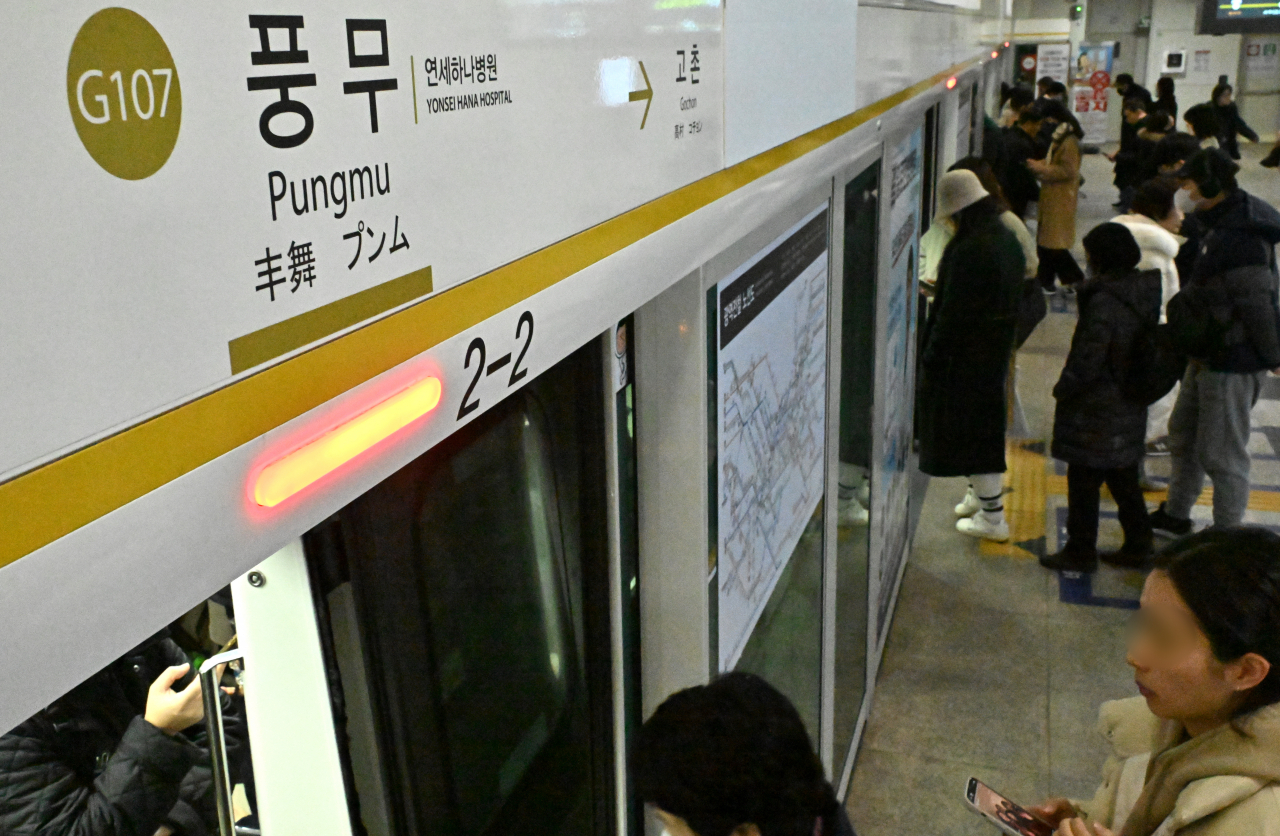
 |
| Commuters board a subway train on the Gimpo Goldline on Jan.19. (Im Se-jun/The Korea Herald) |
Government data showed Tuesday that the notoriously crowded commuter rails connecting Seoul and the satellite city of Gimpo, Gyeonggi Province, continue to be full beyond capacity, despite additional subway trains being dispatched recently to address the issue.
The subway trains of Gimpo Goldline, which connects Seoul and the Gimpo, were carrying as much as 208 percent of the stated maximum capacity of passengers during rush hour, between 7 a.m. and 9 a.m., early this month, according to the Gimpo City Hall.
Operators of the subway line on Aug. 30 expanded the number of trains in operation from 24 to 26 when the trains were carrying nearly twice as many passengers as they should. But the overcrowdedness has not eased, as the boarding rate for July and August stayed at around 190 percent of maximum capacity.
According to Statistics Korea data in 2020, 12.7 percent of Gimpo's population commutes to Seoul for work. While the figure is substantially less than other Gyeonggi Province satellite cities like Hanam and Gwangmyeong -- figures for both are around the 20 percent mark -- no subway line other than the Gimpo Goldline passes through the city as of now.
This means those commuting from Gimpo to Seoul are forced to pack themselves on the tiny two-car trains of the subway line if they wish to avoid Seoul's infamous rush hour.
Gimpo plans to add two more trains on Sept. 30, but it is unclear how effective it will be to add a total of just four cars.
The government has sought to address commuter concerns by extending Seoul Metro Line No. 5 to the Gimpo area or by installing a bus-only lane on Gimpo-Seoul routes. Both plans are in motion, but they have faced delays.









